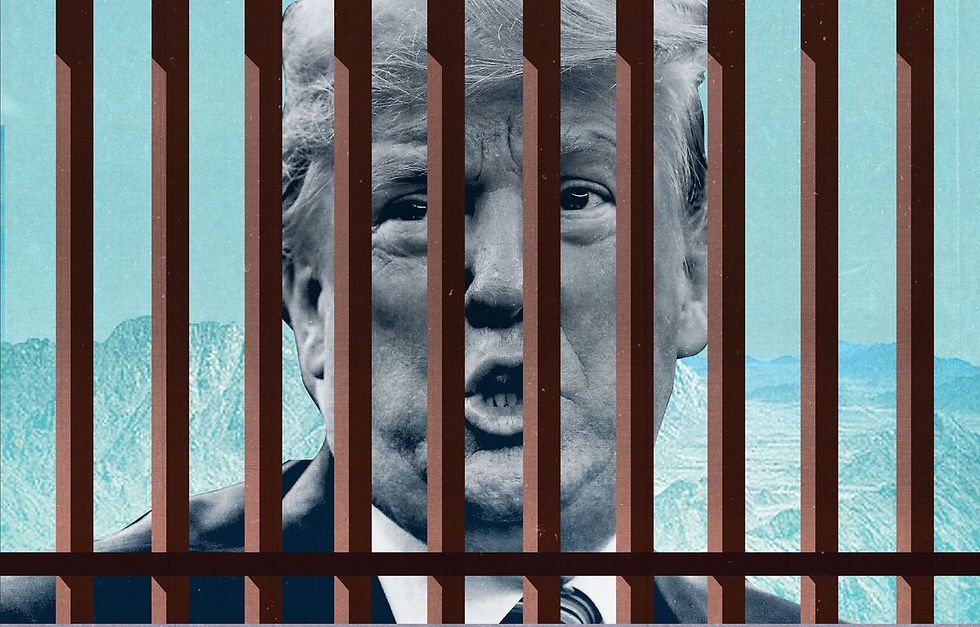Immigration as a crime under Trump’s Administration
- Víctor Virueña

- 5 mar 2019
- 4 Min. de lectura

“Don’t forget (people forget this all the time): in ancient Greek, the word for guest is the same as the word for foreigner: Xenos. And if you were to ask me to define our tragic condition, it’s that the word “xenophobia” survives, and is commonly used, everyone understands it, but the word “xenophilia” has disappeared. That’s how I define the crisis of our condition.”
George Steiner N
Trump’s Immigration Executive Order 13767
In his book “Crippled America: How to Make America Great Again” , Donald Trump dedicated an entire chapter (Immigration: Good walls make good neighbors) to explain his immigration plan: Build a wall in the southern border and make Mexico pay for it, along to hire more border patrol officers, stop issuing visas for specific countries, cut off federal grants to sanctuary cities and end birthright citizenship.
The then-candidate Trump summarized his immigration proposal: “My immigration policy is pretty simple. We need to make changes to our laws to make it easier for those people who can contribute to this country to come here legally while making it impossible for criminal elements and other people to get here illegally. I want good people to come here from all over the world, but I want them to do so legally. We can expedite the process, we can reward achievement and excellence, but we have to respect the legal process. And those people who take advantage of the system and come here illegally should never enjoy the benefits of being a resident—or citizen—of this nation. So I am against any path to citizenship for undocumented workers or anyone else who is in this country illegally.”
This particular importance to the immigration issue is central in the Trump Administration’s public policies and was reflected in one of his first presidential actions: The Executive Order 13767, Border Security and Immigration Enforcement Improvements.
The Executive Order Sec. 4 is significant because mandate the Secretary of the Department of Homeland Security to “immediately plan, design and construct a physical wall along the southern border” This wall is a central matter in Trump’s political agenda, significant for his electoral base and a focus of conflict with the Mexican Government as President Peña firmly opposed to the idea in multiple international forums.
Section 6 terminates with the policy of “catch and release’ and establish mandatory detention to aliens who violate the immigration law.
One of the most controversial measures are contained in Section 10, as mandate the DHS Secretary, to empower State and local agencies “to perform the function of an immigration officer.” This policy has been rejected for many states including California and New York, and for hundreds of cities around the US since they refuse to allocate local police personnel and resources to act as immigration agents, creating sanctuary states and cities and facing sanctions and budget cuts
The “end the abuse of parole” in asylum cases and the custody of unaccompanied alien children are the subjects of Section 11, this controversial measures provoked a humanitarian crisis during the first semester of 2018, since the detention of minors in cages and the separation from parents was repudiated by many American and international human rights organizations and was banned by a court order on June 26, 2018.
The immigration offenses are elevated to “high priority”, Section 13 mandates the Attorney General to allocate resources accord a high priority to prosecute offenses “having a nexus to the southern border” This new perspective of the immigration offenses constituted the core spirit of the Executive Order: to criminalize the immigration offenses and to consider the illegal immigration as a crime with federal prosecution priority.
Before the Executive Order, the immigration law was applied with discretion. However, the new directives terminated the discretion of the immigration authorities to enforce the law just to a particular group and allow other to stay without worries and now mandates to implement the law without distinction.
Criminalization of the immigration offenses as public policy is one of the critical strategies in Trump’s Presidency.
In the last 30 years the immigration law enforcement approach was civil, the deportation and the ban to reentry was the most common penalties, now, the incarceration for long periods, the separation of children for their parents, the limitation of asylum and parole, the utilization of local police in immigration law enforcement, the proposed repeal of the 14th amendment to deny the citizenship right by birth and the consign “built the wall” will be the constant during the rest of Trump’s presidency having as legal base the E.O.
Conclusion
The Executive Order 13767 is the backbone of the immigration President Trump’s policies. This order completely changes the perspective of how the law must be enforced; if from 1986 to 2017 the immigration law was applied with discretion and most of the sanctions was civil, under Trump Presidency the criminalization of the illegal immigration is the norm.
It is foreseeable that Trump’s administration will endure pushing with new directives and memorandums to implement the Executive Order. The loss of the Republican majority in the Congress will difficult the approval of immigration laws, but the E.O. grants power to DHS and the Department of Justice to apply the current law “in extremis” even though the civil rights groups and some federal courts will continue challenging President’s Trump policies.
The criminalization of immigration is the path chosen by Trump’s administration and is one of the faces of a divided America.



Comentarios